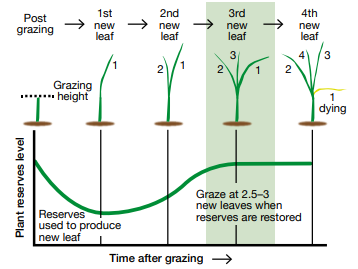Three-leaf theory
Thursday, 4 March 2021
With a challenging start to the grazing season, it’s worth remembering three-leaf theory when faced with any difficult decisions, or grazing disasters, this year.
Understanding how the rye-grass plant grows helps with important management issues, such as residual height and post-grazing recovery time.
- A rye-grass plant only ever grows three live leaves: when a fourth leaf appears, the first leaf dies off
- Leaf 1 produces 10–15% of the grass in a sward
- Leaf 2 produces 30–40% of the grass
- Leaf 3 produces 45–55% of the grass
- Best-quality grass is between 2.5 and 3 leaves
- Lengthening grazing round to 23–24 days grows an extra 0.5 of a leaf
- Graze at 8–10 cm, leave a residual of 4–5 cm – sugars are stored in this stubble and help to grow the next leaf after grazing
- Leave 4–5 cm between clumps and 10 cm on clumps to achieve a balance between residual
- Leaf appearance rate depends on temperature and moisture
For more information, check out AHDB’s Grass+ factsheet 15 and AHDB Planning grazing strategies.

Topics:
Sectors:
Tags:

